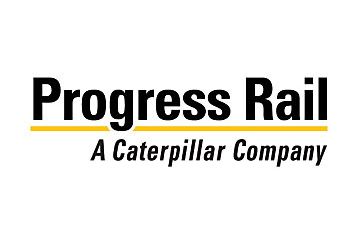How We Take an Older Locomotive and Make It a Smart, Connected Machine
February 5, 2021
The average U.S. locomotive is 25 years old, built back before the internet of things was, well, even a thing.
Keeping these diesel-electric workhorses rolling is critical to the health of the U.S. economy. But bringing the units up-to-date in an age of smart, connected machines is essential, too. Railroads turn to Progress Rail to periodically modernize their locomotives, remanufacturing older engines and upgrading controls with new, state-of-the-art technologies.
The result? More reliable, easier-to-maintain, connected machines, ready – in short order – to return to work, pulling whatever the world’s largest economy demands. Like rail transport itself, the modernization process is sustainable. “We’re extending the life of our customer’s 25- to 30-year-old assets by remanufacturing or replacing locomotive systems that will result in a more reliable and efficient locomotive for years to come,” says Art Erbacher, Vice President of Locomotive Aftermarket Operations at Progress Rail’s Mayfield, Kentucky facility, where one customer is having 80 locomotives modernized..
It’s an update that is more essential now than ever before. “There’s more technology in an iPhone today than there was in a fleet of locomotives built 25 years ago,” says Erbacher.
A Mayfield Modernization
Located in rural western Kentucky, just south of the Illinois border, Mayfield is one of three Progress Rail facilities – the other two are in Patterson, Georgia, and Tacoma, Washington – where locomotives are modernized.
Modernization is a multi-faceted fix for railroads. It updates the onboard controls of older locomotives with digital information age systems, fine-tunes their engines so they can be profitably reassigned to haul whatever today’s freight market requires, and improves overall fleet efficiency, reliability and availability – all while often lowering emissions to boot.
The process, which takes just a few weeks from start to finish, brings locomotives into the 21st century by retrofitting them with the same full-featured microprocessor technology available in current model locomotives, allowing for integration with the telematics and remote monitoring and diagnostic technologies now becoming widespread.
What Happens Inside the Locomotive
Modernization also often involves reworking and repainting the locomotive’s sheet metal skin. But it’s what happens inside the locomotives that really matters.
“When a railroad buys locomotives, it needs them to last a long time,” Erbacher says. “But as time goes on, components wear and the reliability and availability of those units starts to deteriorate. So they need more units to do the same amount of work.”
“We break that cycle. We help customers improve the reliability, maintainability and overall life of their locomotives through overhauls, modernizations and repowers that basically give those locomotives a completely new lease on life.”
Helping a Customer Overhaul 80 Locomotives
At the end of 2017, one customer sent 80 of its EMD locomotives – including SD60Ms, GP60Ms and SD75Ms – to Mayfield to have their diesel engines and electric alternators overhauled, their cabs refreshed and the units painted.
Most of the work is being done in Mayfield, a sprawling 145-acre complex with more than 300 highly skilled employees.
The program includes control systems updates for the EMD 60-class units through a retrofit known inside Progress Rail as an EM2000 overlay.
“These locomotives typically came into service back before the Internet of Things was a thing,” says Erbacher. “We retrofit them so they benefit from all of the innovation and technological advancement that has occurred in the industry in the interim.”
The EMD SD75Ms that Progress Rail is modernizing are also having their horsepower lowered while they’re in Mayfield – a process known as derating.
Getting the Customer Confidently Back to Work
By derating these high horsepower, heavy freight locomotives, Progress Rail increases the fuel efficiency and reduces engine stresses, so the Class I customer can confidently and profitably put the units to work in lighter intermediate service.
This is all buoyed by the fact that Class I railroads must continually evaluate the current economic climate, regardless of the trend in commodities. With the current climate, railroads are working quickly to align their locomotive resources and costs to reflect the realities of today’s marketplace. “Railroads are an incredibly dynamic business,” Erbacher says, “and as things change – whether coal is running hard or consumer goods are running hard – they have to evaluate their fleets and adjust their service levels and costs to remain competitive in a tough business.”
-
Progress Rail
Caterpillar Brands - Progress Rail and Electro-Motive Diesel deliver full range cost-effective solutions to a broad spectrum of railway and mining customers.
Learn More -
Why Caterpillar?
Whether it be ground breaking products, best in class solutions or a lifelong career, you build what matters at Caterpillar
Meet the People


